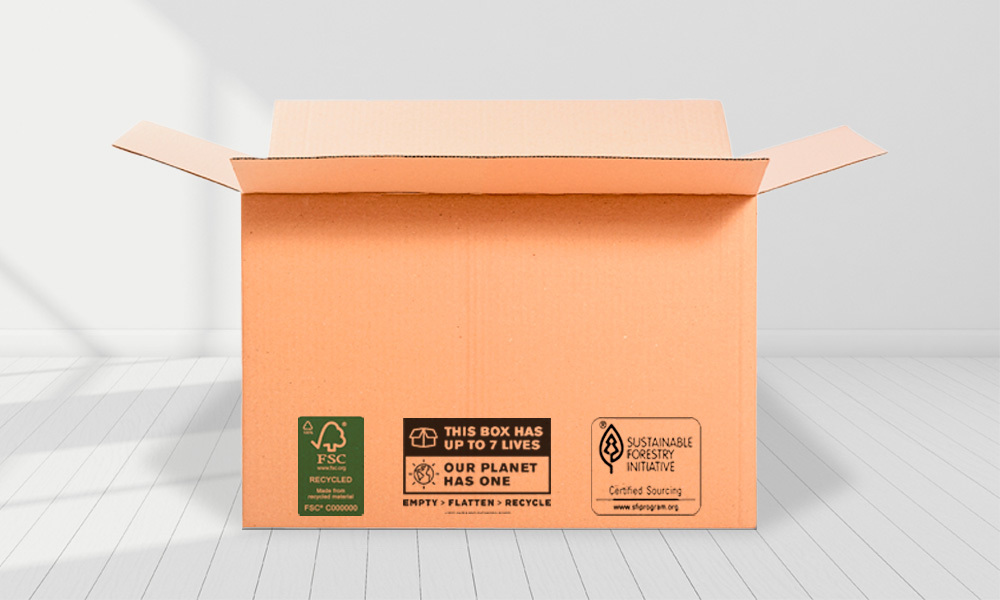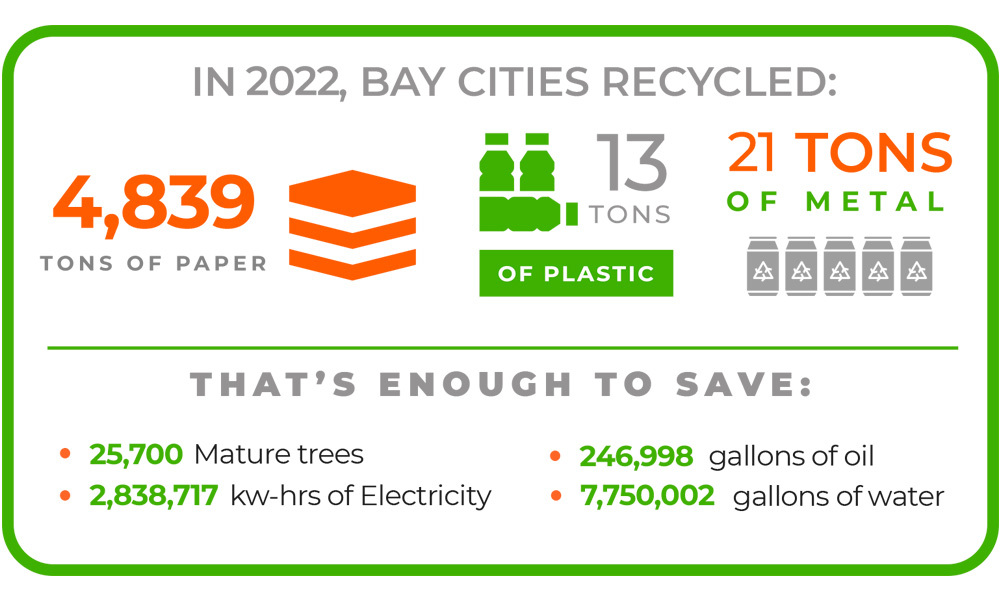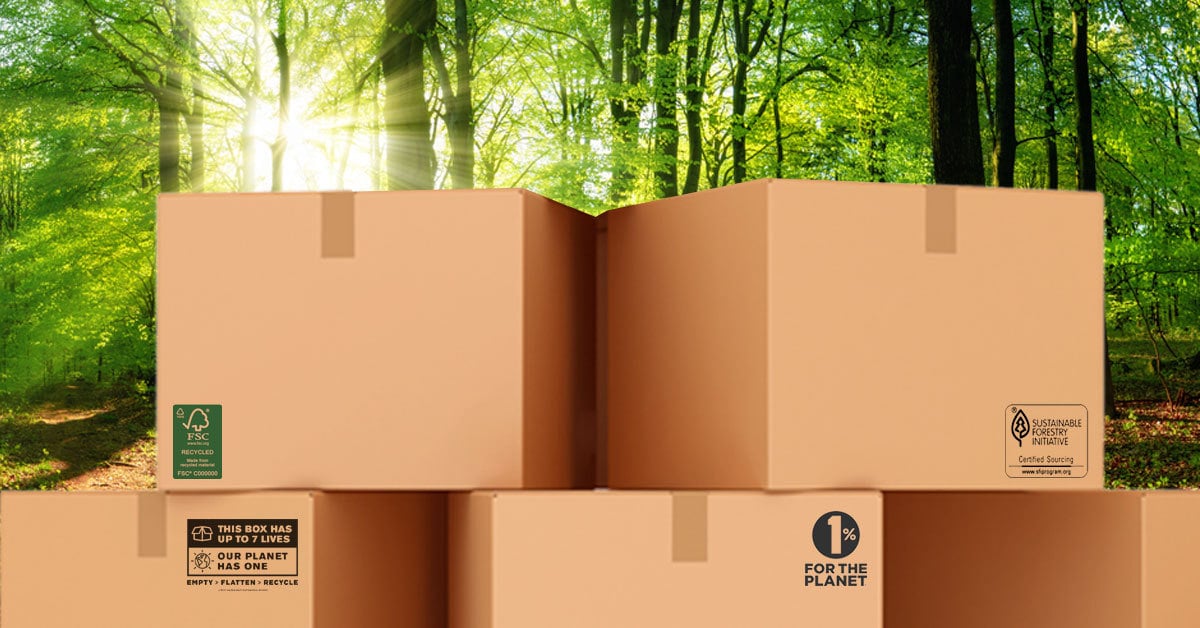An increasingly important factor in fueling purchasing decisions, sustainability continues to be a top priority for today’s consumers. According to NielsenIQ, 46% of consumers expect brands to be at the forefront of sustainable change.
But how do consumers know which products are sustainably produced and packaged?
Under the umbrella of sustainability symbols, recycling symbols inform consumers about the specifics of recycling packages. In this entry, we’ll drill down to help you understand more about these symbols and how to use them.
This guide looks at recycling symbols and identifies common marks for communicating recyclability and sustainability information to consumers.
What are Sustainability Symbols?
Legislation and governance, greenwashing scrutiny, and company-owned (rather than regulatory-driven) accountability are among the specific sustainability trends of 2023.
The takeaway for brands? While discussing sustainability might have once been enough, this is no longer the case. With the emphasis placed on purposeful action by today’s consumers, showcasing your efforts and progress is essential.
That’s where sustainability symbols come in. It is vital to ensure a clear representation of various sustainability standards, including trading compliance, animal testing, recycling, and fair trade. Streamlining the design of these symbols can enhance visual recognition and promote consumer understanding of a product's sustainability credentials.
In sum, when companies use the appropriate packaging symbols to demonstrate their sustainability initiatives, they give consumers the information and assurance they need to make informed buying decisions that align with their core values.
And because they are verifiable claims, sustainability symbols are an excellent defense against greenwashing.
Making Sense of Sustainability Symbols
Knowing what sustainability symbols mean is a powerful resource for consumers. Here’s a look at some of the most common sustainability symbols indicating certification, third-party verification, and trust:
-
FSC Standard
Forest Stewardship Council guarantees responsible forest management, setting the standard under which forests and companies are certified, promoting environmentally sound, socially beneficial and economically prosperous management of the world's forests. Its principles and criteria form the basis for global forest standards, including the FSC US National Standard. Organizations classified within the FSC's Chain of Custody manufacture paper-based packaging made of FSC certified mix products and controlled wood fibers.
-
SFI Certificate
Sustainable Forestry Initiative® is an independent nonprofit organization working collectively with the forest sector, brand owners, conservation groups, resource professionals, landowners, educators, local communities, Indigenous Peoples, governments, and universities for an overall better quality of life.Organizations classified as a Certified Source for SFI certified paper means at least 80% of the paper used is provided by an SFI certified Chain of Custody supplier.

-
Paper & Packaging Box to Nature Program
The Box to Nature program promotes residential fiber recycling through effective messaging on sustainable paper packaging, fostering positive consumer associations, and supporting socially conscious companies. Developed by The Paper & Packaging Board, in collaboration with participating paper and corrugated manufacturing companies and industry partners, Box to Nature is an initiative where box manufacturers work with e-commerce brands to print a graphic on their boxes that encourages consumers to recycle.
-
The FAIRTRADE Mark
The most globally recognized ethical label, the FAIRTRADE Mark, is the symbol of the international Fairtrade system. Products with this organization support the lives of farmers, workers, and their communities.
-
Certified B Corps
This certification indicates that businesses have met the highest standards for ethical performance across everything from materials and supply chains to employee benefits and philanthropy.
-
1% for the Planet
They represent a global network of businesses, individuals, and environmental partners. The 1% for the Planet logo indicates a commitment to addressing the world’s most pressing ecological issues to benefit people and the planet.
-
Green Seal certification
Nonprofit Green Seal, an eco-labeling pioneer, recently announced its work toward a sustainable packaging recognition program for consumable product manufacturers.
One of the world’s most trusted ecolabels for cleaning, sanitary, and facilities care products and services, Green Seal aims to reward brands committed to reducing package waste, increasing recycled content in packaging, and verifying recyclability claims about packaging materials.
Understanding Recycling Symbols
Despite consumer prioritization of recycling (and brands that value it), the world of recycling symbols still has a long way to go because there is yet to be a single labeling standard.
How2Recycle attempts to correct this issue with its standardized labeling system to provide consistent and transparent packaging recycling information.
In addition to telling you what type of material the packaging is made from, How2Recycle labels also tell you which category the packaging falls into (Widely Recycled, Check Locally, Not Yet Recycled, and Store Drop Off) as well as if any additional steps are necessary before recycling.
The corrugated packaging industry also has its own Corrugated Recycles symbols to promote recycling.
Bay Cities: Putting Sustainable Packaging First
At Bay Cities, we prioritize sustainability by supporting a circular economy through behavioral changes—not just talk. We’re also committed to continually improving our sustainability efforts by implementing our green initiative — check out the Lifecycle of a Box at Bay Cities to see this plan in action!

Some recent improvements to our eco-friendly packaging include introducing water-based inks and adhesives, implementing ethical e-waste disposal, and debuting our own “Recycle Me” box mark for optimal transparency. We’re proud to cover printing costs for this mark to incentivize our clients to choose recyclable packaging and compel consumers to recycle.
Whether you’re looking to learn more about what makes packaging sustainable or ready to get on board with recycling packaging, the Bay Cities team can help. Request a quote today.



/BC_Logo2_White.png?width=300&height=83&name=BC_Logo2_White.png)